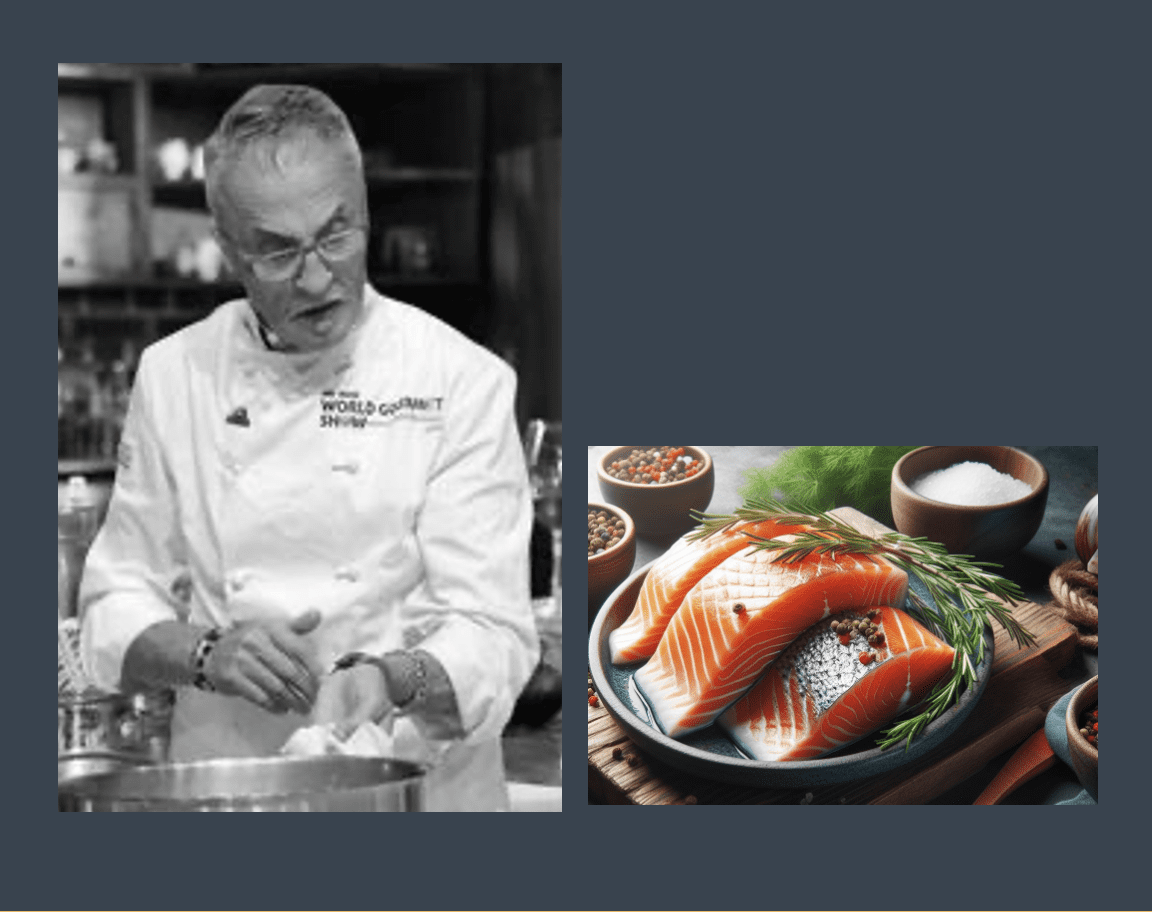Search Posts
Recent Posts
- Outdoors in RI: Help keep recreation areas clean. Invasive Milfoil, trash. 2A update – Jeff Gross July 26, 2024
- Real Estate in RI: Highest-ever sale in Queen’s Grant, EG $1.25M, by Residential Properties July 26, 2024
- Homeless in RI: Gov. Newsom issues Executive Order. Remove California’s encampments. July 26, 2024
- Let the games begin. XXXIII Summer Olympics – John Cardullo July 26, 2024
- GriefSPEAK: What would you do? – Mari Dias Nardolillo July 26, 2024
Categories
Subscribe!
Thanks for subscribing! Please check your email for further instructions.

Ask Chef Walter: Selecting Salmon – Walter Potenza
by Executive Chef Walter Potenza
Friends:
The Ask Chef Walter feature is highly popular because it puts you, the reader, within walking distance of a professional Master Chef for all your questions.
Last week, Jonathan W from Dumont, New Jersey, asked about a comprehensive guide to selecting the Best Salmon at the store. Here we go!
Salmon is a highly nutritious and widely appreciated fish among seafood connoisseurs globally. When purchasing this delectable fish from a store, it is imperative to consider various factors to acquire the freshest and highest quality fish available. These factors include but are not limited to the fish’s origin, harvesting, handling, and storage practices. Considering these factors, consumers can make informed and optimal choices when purchasing this beloved seafood.
This brief and comprehensive guide will walk you through selecting the perfect salmon, from identifying the varieties available to understanding their provenance, quality, and taste. Whether you’re a seasoned salmon connoisseur or a newcomer to the world of seafood, these tips will provide valuable insights to make the best choice when buying this delicious fish.
When purchasing salmon, it’s essential to consider several factors to ensure its freshness and quality. Let’s take a closer look.
First, examine the salmon’s overall appearance. Look for firm and moist flesh with shiny, vibrant skin. A healthy salmon fish should have a bright, uniform color and a shiny appearance. Avoid fillets or whole fish that appear dull, dry, or discolored. The eyes should be clear, not cloudy, indicating freshness.
Next, run your fingers against the scales of the salmon. The scales should be firmly attached and come off slowly. Loose or missing scales can be a sign of mishandling or improper storage. If you’re buying a whole salmon, check for any signs of damage or bruises on the skin.
Fresh salmon should have a clean, ocean-like scent. It may be past its prime if the fish smells overly fishy or has a strong ammonia odor. Trust your instincts; a foul smell is a clear indication of spoilage.
Different types of salmon come from various regions, and their origin can affect their taste and quality. Atlantic salmon is farm-raised with a mild flavor and fatty texture. In contrast, Pacific salmon is wild-caught and comes in distinct varieties like Chinook (King Salmon), Sockeye (Red Salmon), Coho (Silver Salmon), and Pink Salmon.
Chinook salmon has rich, high-fat content and large flakes, while Sockeye salmon has a deep red color, bold flavor, and firm texture. Coho salmon has a medium fat content, delicate flavor, and tender flesh. Pink salmon is smaller, milder in taste, and lighter in color.
Always look for certifications like the Marine Stewardship Council (MSC) label when buying salmon, indicating that the seafood is sustainable and responsibly sourced. This ensures that the salmon is caught or farmed in an environmentally friendly manner.
Fresh salmon is ideal, but frozen options can be just as good, especially if frozen shortly after harvest. If choosing frozen salmon, ensure there are no signs of freezer burn and the packaging is intact. It’s important to note that frozen salmon may have a slightly different texture and taste than fresh salmon.
Lastly, don’t hesitate to ask the fishmonger for assistance. They can provide information on the salmon’s origin, share recommendations, and even offer to cut the fish according to your preferences. If purchasing pre-packaged salmon, check for the butcher or packaging date to ensure freshness.
I hope I helped you in purchasing the best quality salmon available.
The bottom line!
When it comes to selecting the best salmon, there are a few factors to take into consideration. A visual inspection of the fish, an evaluation of its sensory attributes, and an assessment of its origin and certifications are all important aspects to consider. You can confidently select the perfect salmon that meets your culinary preferences by thoughtfully considering these factors. Whether you are partial to Chinook’s rich flavor or Coho’s delicate taste, following these steps will ensure a delightful and satisfying seafood experience.
Flavors + Knowledge Editorial Board SimVal Media Group USA



